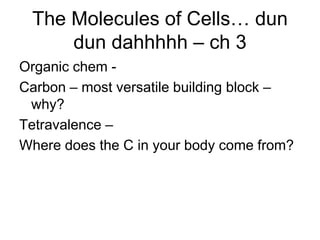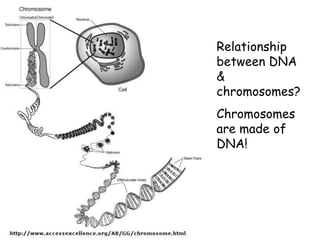1. Organic molecules like carbohydrates, lipids, proteins, and nucleic acids are made up of monomers linked together through covalent bonds.
2. Carbon is a versatile building block due to its ability to form four covalent bonds (tetravalency). This allows it to link to other carbon atoms to form chains, branches, and rings.
3. Organic molecules contain functional groups that influence their chemical properties. Common functional groups include hydroxyl, carbonyl, carboxyl, amino, and phosphate groups.
4. The structure and bonding of organic molecules contribute to isomerism, including structural, geometric, and enantiomer isomers. Spatial arrangement of atoms and groups affects molecular properties.
































































